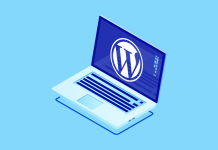Wondering which language is mostly used in software development? Then you have landed at the right place. Software development is a dynamic and ever-evolving field that plays a pivotal role in shaping the technological landscape of our world. At its core, software development involves creating, designing, and maintaining computer programs and applications that enable computers to perform various tasks and functions. These applications can range from mobile apps and web applications to desktop software and embedded systems.
A fundamental aspect of software development is the choice of programming language. Programming languages serve as the foundation upon which developers build their software solutions. They provide the tools and syntax needed to instruct computers to execute specific tasks. The choice of a programming language can significantly impact the development process, project outcomes, and the user experience.
In this guide, we will explore the diverse and multifaceted world of programming languages used in software development. We’ll delve into the most popular programming languages, their applications, strengths, and weaknesses. Additionally, we’ll discuss domain-specific languages tailored for particular tasks and emerging languages that are gaining prominence in various niches.
Discover Which Language is Mostly Used in Software Development
Popular Programming Languages
In the world of software development, choosing the right programming language, which language is mostly used in software development, is akin to selecting the right tool for a specific job. Each programming language has its own unique features, strengths, and areas of application. In this section, we’ll take a closer look at some of the most popular programming languages, exploring their overviews, use cases, as well as their advantages and disadvantages.
1. Python
Python is a versatile, high-level programming language known for its simplicity and readability. Guido van Rossum created Python in the late 1980s, and it has since gained widespread popularity among developers due to its clean syntax and extensive standard library.
Use Cases
- Web development (Django, Flask)
- Data science and machine learning (NumPy, pandas, TensorFlow)
- Automation and scripting
- Scientific computing
- Game development (Pygame)
Advantages:
- Easy to learn and read, making it ideal for beginners.
- Large and active community, leading to a wealth of libraries and resources.
- Cross-platform compatibility.
- Excellent support for integration with other languages.
- Great for rapid development and prototyping.
Disadvantages:
- Slower execution speed compared to lower-level languages like C++.
- Not suitable for all types of high-performance applications.
- Global interpreter lock (GIL) can limit multi-threading performance.
Related Article: Python vs. JavaScript
2. JavaScript
JavaScript is a dynamic, high-level scripting language primarily used for web development. It is essential for building interactive and responsive web applications and is supported by all major web browsers.
Use Cases
- Front-end web development (React, Angular, Vue.js)
- Back-end development (Node.js)
- Mobile app development (React Native)
- Game development (Three.js)
- Serverless computing (AWS Lambda, Azure Functions)
Advantages:
- Widely supported in web browsers.
- A rich ecosystem of libraries and frameworks.
- Versatile for both front-end and back-end development.
- Easy to get started with due to its ubiquity.
Disadvantages:
- Can be challenging to manage in large-scale applications.
- Inconsistent browser support for some features.
- Single-threaded nature can lead to performance bottlenecks.
Related Article: Difference Between JavaScript and ReactJs
3. Java
Java is a statically typed, object-oriented programming language known for its platform independence. It was developed by James Gosling at Sun Microsystems (now owned by Oracle) and is widely used in enterprise and Android app development.
Use Cases
- Enterprise applications (Java EE)
- Android app development
- Web applications (Java Spring)
- Big data processing (Hadoop)
- Embedded systems
Advantages:
- Platform independence (write once, run anywhere).
- Strong support for multithreading and concurrent programming.
- Robust standard library and extensive ecosystem.
- Excellent community support and documentation.
Disadvantages:
- The verbosity of code compared to some other languages.
- Slower startup times for some applications.
- Memory consumption can be high.
4. C++
C++ is an extension of the C programming language, developed in the early 1980s. It’s known for its high performance and ability to handle low-level memory operations while also providing high-level abstractions. C++ is commonly used in systems programming and game development.
Use Cases
- Systems programming (operating systems, device drivers)
- Game development (Unreal Engine, Unity)
- Embedded systems (IoT devices)
- High-performance applications (financial software, simulations)
Advantages:
- Exceptional performance and control over hardware.
- Robust standard library.
- Extensive community and third-party libraries.
- Strong support for object-oriented programming.
Disadvantages:
- Complexity can lead to harder-to-maintain code.
- The steeper learning curve, especially for beginners.
- Manual memory management can lead to memory leaks and bugs.
C, C++, Typescript, PHP, and Kotlin have been ranked in the list of most popular programming languages statistics for most desired languages by recruiters, with the percentages ranging from 0.94% to 26.02%.
5. C#
C# (pronounced “C sharp”) is a modern, statically typed language developed by Microsoft. It is known for its simplicity, and readability, and is widely used for developing Windows applications and game development through the Unity engine.
Use Cases
- Windows desktop applications (Windows Forms, WPF)
- Game development (Unity)
- Web applications (ASP.NET)
- Cross-platform mobile development (Xamarin)
- Cloud-based applications (Azure)
Advantages:
- Strong integration with the Microsoft ecosystem.
- Modern language features like LINQ, async/await, and properties.
- Excellent tooling with Visual Studio.
- Cross-platform capabilities through .NET Core.
Disadvantages:
- Limited use outside of Windows and Microsoft technologies.
- Smaller community compared to some other languages.
- Can be resource-intensive in certain applications.
6. Ruby
Ruby is a dynamic, object-oriented scripting language created by Yukihiro Matsumoto in the mid-1990s. It is known for its simplicity and productivity, with a focus on developer happiness and code readability.
Use Cases
- Web development (Ruby on Rails)
- Automation and scripting
- Prototyping
- Data analysis (with libraries like Ruby-Numo)
- Web scraping
Advantages:
- Clean and concise syntax that emphasizes developer productivity.
- The Rails framework simplifies web application development.
- Strong community and extensive library support.
- Cross-platform compatibility.
Disadvantages:
- Slower performance compared to some other languages.
- Limited use in performance-critical or resource-intensive applications.
- Smaller ecosystem compared to languages like Python and JavaScript.
Related Article: Top Front-End Development Languages
7. Swift
Swift is a modern, statically typed language developed by Apple in 2014. It was designed with a focus on performance, safety, and ease of use. Swift is the primary language for developing iOS, macOS, watchOS, and tvOS applications.
Use Cases
- iOS app development
- macOS app development
- Server-side programming (with frameworks like Vapor)
- Cross-platform mobile development (using frameworks like Flutter)
Advantages:
- Exceptional performance and memory management.
- Safety features to prevent common programming errors.
- Continuously evolving with an active community.
- Seamless integration with Apple’s ecosystem.
Disadvantages:
- Limited use outside of Apple’s platforms.
- Smaller community compared to some older languages.
- Frequent language updates can require code changes for compatibility.
8. PHP
PHP (Hypertext Preprocessor) is a widely-used, server-side scripting language designed for web development. It was created in the mid-1990s and has since become a cornerstone of the web, powering countless websites and web applications.
Use Cases
- Dynamic web page creation
- Server-side scripting (e.g., with Apache or Nginx)
- Building web applications (e.g., WordPress, Drupal)
- Command-line scripting
- API development
Advantages:
- Easy to learn and get started with.
- Broad community support and extensive library of frameworks.
- Excellent for web development, especially with content management systems (CMS).
- Cross-platform compatibility.
Disadvantages:
- Often criticized for inconsistent function names and design choices.
- Can lead to security vulnerabilities if not used carefully.
- Not as performant as some other languages for CPU-intensive tasks.
- Can have issues with scalability in large applications.
Related Article: Difference Between JavaScript and PHP
9. Go (Golang)
Go, often referred to as Golang, is a statically typed, compiled language developed by Google in 2007. It’s designed for simplicity, efficiency, and high performance, making it an excellent choice for building scalable systems.
Use Cases
- Building scalable web services and APIs
- Cloud-native development (Docker, Kubernetes)
- Systems programming
- Network programming
- High-concurrency applications
Advantages:
- Exceptional performance, especially in concurrent applications.
- Strong type safety and memory management.
- Minimalist and readable syntax.
- The standard library includes robust networking and concurrent programming support.
- Cross-platform compatibility.
Disadvantages:
- Smaller ecosystem compared to older languages.
- Lack of generics (though this is changing in newer versions).
- The learning curve for those not accustomed to its conventions.
10. Rust
Rust is a statically-typed, systems programming language developed by Mozilla in 2010. It is designed to provide the performance of C and C++ while eliminating common programming errors through a strict ownership system.
Use Cases
- Systems programming (operating systems, device drivers)
- Game development (using the Amethyst engine)
- WebAssembly (Wasm) for browser-based applications
- Network services and microservices
- IoT and embedded systems
Advantages:
- Strong emphasis on safety and memory management.
- Concurrency support without data races.
- Modern and expressive syntax.
- Extensive standard library and package manager (Cargo).
- Active and growing community.
Disadvantages:
- Steeper learning curve, particularly for those new to systems programming.
- Smaller ecosystem compared to established languages like C++.
- Slower compilation times compared to some other languages.
Related Article: Top Web Development Programming Languages
Domain-Specific Languages

Domain-specific languages (DSLs) are specialized programming languages tailored to specific tasks or application domains, answering the question: “which language is mostly used in software development?” They provide a level of abstraction that simplifies development within a particular context. In this section, we will explore some notable domain-specific languages and their applications.
1. SQL (Structured Query Language)
Overview: SQL is a domain-specific language for managing and querying relational databases. It allows users to interact with databases to retrieve, insert, update, and delete data.
Use Cases:
- Database management systems (e.g., MySQL, PostgreSQL, Oracle)
- Data analysis and reporting
- Business intelligence tools
- Web application development (backend data storage)
Advantages:
- Simplifies complex database operations.
- Standardized language used across various database systems.
- Efficient for working with structured data.
- Supports data manipulation and retrieval with ease.
Disadvantages:
- Limited to database-related tasks.
- Requires knowledge of database schema and design.
2. HTML/CSS
Overview: HTML (Hypertext Markup Language) and CSS (Cascading Style Sheets) are domain-specific languages for web development. HTML is used for structuring web content, while CSS is used for styling and layout.
Use Cases:
- Creating web pages and web applications
- Designing user interfaces for websites
- Responsive web design
- Customizing the appearance of web elements
Advantages:
- Fundamental for web development.
- Separation of content (HTML) and presentation (CSS).
- Supported by all web browsers.
- Extensive community and resources.
Disadvantages:
- Limited to web-related tasks.
- Can be challenging to achieve complex layouts.
Related Article: What Languages Should a Web Developer Know?
3. MATLAB
Overview: MATLAB is a high-level domain-specific language for numerical computing and data analysis. It’s widely used in engineering, science, and mathematical research.
Use Cases:
- Data analysis and visualization
- Numerical simulations
- Signal processing
- Control system design
- Machine learning and deep learning (with toolboxes)
Advantages:
- Rich set of built-in functions and toolboxes.
- User-friendly for mathematical and scientific tasks.
- Interactive development environment.
- Well-suited for prototyping.
Disadvantages:
- Proprietary software with licensing costs.
- Limited outside of scientific and engineering domains.
4. R
Overview: R is a domain-specific language and environment for statistical computing and data analysis. It is popular among statisticians and data scientists for its extensive statistical libraries and data visualization capabilities.
Use Cases:
- Statistical analysis and modeling
- Data visualization (ggplot2, lattice)
- Machine learning (with packages like Caret and Xgboost)
- Bioinformatics and genomics research
- Social sciences research
Advantages:
- Open-source and free to use.
- Active and growing user community.
- Comprehensive statistical packages.
- Exceptional data visualization capabilities.
Disadvantages:
- Slower execution speed for some tasks.
- May require additional programming languages for non-statistical tasks.
5. VHDL/Verilog
Overview: VHDL (VHSIC Hardware Description Language) and Verilog are domain-specific languages for hardware description and digital circuit design. They are essential for designing and simulating electronic systems.
Use Cases:
- FPGA (Field-Programmable Gate Array) and ASIC (Application-Specific Integrated Circuit) design
- Digital logic simulation and verification
- Hardware description for embedded systems
Advantages:
- Precise and efficient for hardware design.
- Simulations allow for early error detection.
- Supported by various electronic design automation (EDA) tools.
Disadvantages:
- Specialized in hardware description.
- Steeper learning curve compared to software development languages.
Emerging and Niche Languages

In the ever-evolving landscape of programming languages, several emerging and niche languages have gained traction due to their unique features and suitability for specific tasks. In this section, we’ll explore five such languages and their applications.
1. Kotlin
Overview: Kotlin is a statically typed programming language developed by JetBrains. It is designed to be fully interoperable with Java, making it an attractive choice for Android app development and other Java-based projects. Kotlin offers modern language features and concise syntax.
Use Cases:
- Android app development
- Server-side development (with frameworks like Ktor)
- Web development (using Kotlin/JS)
- Data analysis and scripting
Advantages:
- Interoperability with Java.
- Concise syntax reduces boilerplate code.
- Enhanced safety features.
- Active and growing community support.
- Officially supported for Android app development.
Disadvantages:
- Smaller ecosystem compared to Java.
- The learning curve for Java developers transitioning to Kotlin.
Related Article: React Native vs. Kotlin
2. Dart
Overview: Dart is a client-optimized language developed by Google. It’s primarily known for its use in building web and mobile applications using the Flutter framework. Dart focuses on high performance, scalability, and developer productivity.
Use Cases:
- Building cross-platform mobile apps with Flutter
- Web application development
- Server-side programming (using Dart on the server)
Advantages:
- Efficient and predictable performance.
- Hot reload for fast development cycles.
- Unified language for both front-end and back-end development.
- Strong support for asynchronous programming.
Disadvantages:
- Smaller community compared to more established languages.
- Limited outside the Flutter ecosystem.
3. Julia
Overview: Julia is a high-level, high-performance language designed for numerical and scientific computing. It aims to combine the ease of use of languages like Python with the performance of lower-level languages like C++.
Use Cases:
- Numerical and scientific computing
- Data analysis and visualization
- Machine learning and deep learning
- High-performance simulations
Advantages:
- Exceptional performance is often comparable to low-level languages.
- User-friendly and expressive syntax.
- Extensive mathematical libraries.
- Active development and growing community.
Disadvantages:
- Smaller ecosystem compared to Python and R.
- The learning curve for users coming from other languages.
4. Elm
Overview: Elm is a functional programming language designed for front-end web development. It focuses on creating reliable and maintainable web applications by eliminating runtime errors through a strong type system.
Use Cases:
- Building web applications with a focus on reliability
- Web user interfaces
- Interactive and real-time applications
Advantages:
- A strong type of system prevents runtime errors.
- Simple and expressive syntax.
- Excellent tooling with Elm’s package manager.
- Easy integration with JavaScript.
Disadvantages:
- Smaller community and ecosystem compared to JavaScript.
- The learning curve for developers new to functional programming.
5. Solidity
Overview: Solidity is a domain-specific language for writing smart contracts on the Ethereum blockchain. It’s designed to be secure, reliable, and deterministic for creating decentralized applications (DApps).
Use Cases:
- Creating Ethereum-based smart contracts
- Developing decentralized applications (DApps)
- Blockchain development
Advantages:
- Designed for blockchain and smart contract development.
- Strong focus on security and reliability.
- Active developer community.
- Compatibility with Ethereum Virtual Machine (EVM).
Disadvantages:
- Limited to blockchain-related tasks.
- Developing secure smart contracts can be challenging.
- Rapidly evolving technology with ongoing updates.
Bonus Article: Best Software Development Platforms
Conclusion
In the dynamic world of software development, the choice of programming language, which language is mostly used in software development, is a critical decision that can significantly impact the success of a project. Throughout this guide, we have explored a diverse array of programming languages, each with its own strengths, weaknesses, and areas of application.
As you embark on your coding journey or embark on new projects, remember that the programming language you choose is just one piece of the puzzle. Embrace the opportunity to learn, adapt, and explore new languages, as it will not only expand your skillset but also empower you to tackle a wider range of challenges and create innovative solutions.
Ultimately, the programming world is a vibrant and ever-evolving community where the possibilities are endless. With the right language and the right mindset, you can transform your ideas into functional software that shapes the future of technology. So, choose wisely, keep learning, and continue building amazing things. The world of software development awaits your creativity and expertise.









